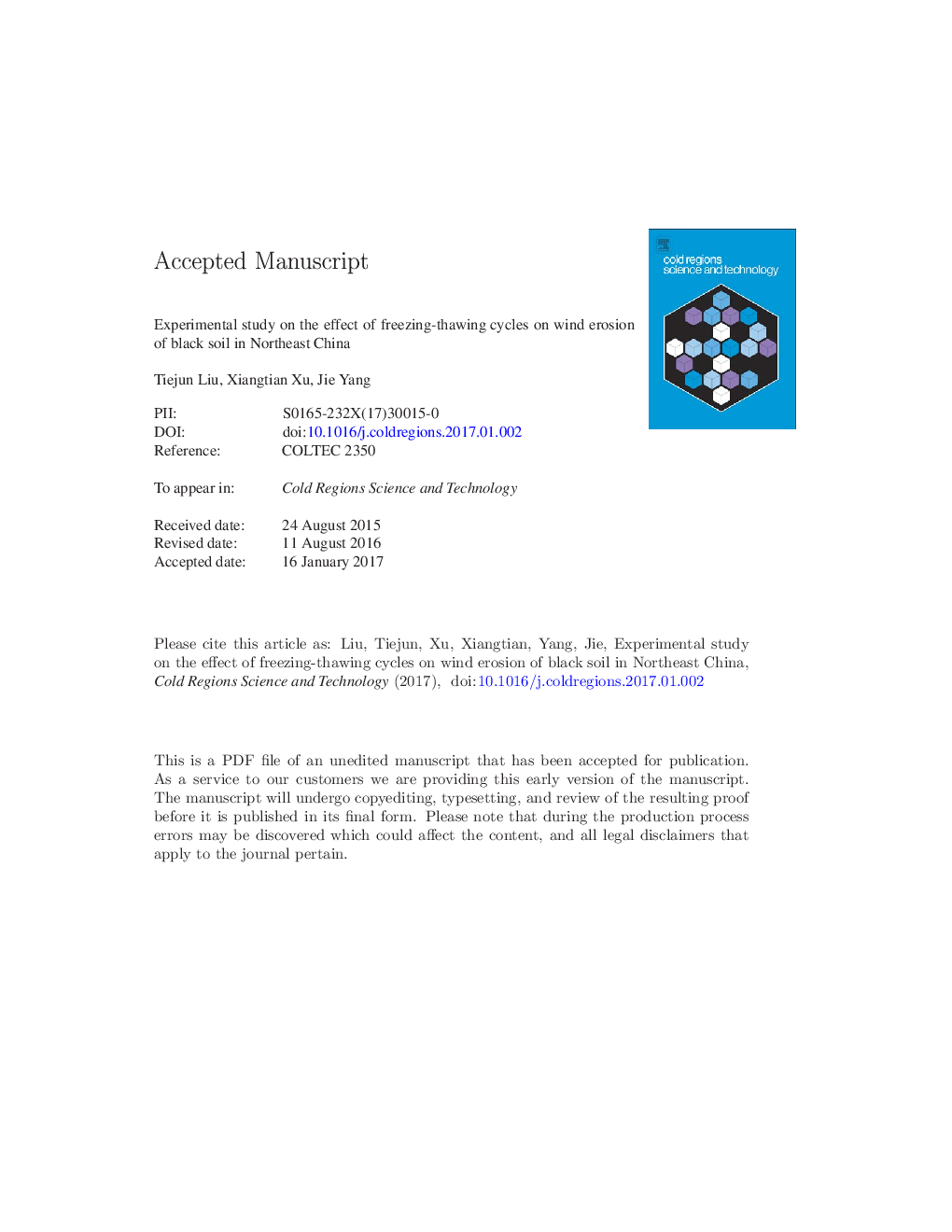| Article ID | Journal | Published Year | Pages | File Type |
|---|---|---|---|---|
| 5779440 | Cold Regions Science and Technology | 2017 | 32 Pages |
Abstract
The black soil region in Northeast China suffers from the dual effects of freezing-thawing process and wind erosion in winter. We studied the influence of freezing-thawing cycles on wind erosion strength of black soil by simulating the conditions of the black soil region in Northeast China. An increase in the porosity on surface of soil specimens was correlated with the number of freezing-thawing cycles, such that soils with a surface moisture content of 5%, 7% and 8% increased porosity after 3, 6 and 9 freezing-thawing cycles. Freezing-thawing cycles induced increases in porosity lead to weakened cohesive forces within the topsoil. The net result was an increase in the sand transport rate of unit width within the height interval of 0 to 40Â cm above the ground and an increase in the wind-sand flow structure height of 1-3Â cm. In addition, after 6-9 freezing-thawing cycles, wind erosion strength increased by 1.2 and 2.0 times, when soil moisture contents were 5% and 7%, respectively. However, soil samples with a moisture content of 8% were not susceptible to freezing-thawing cycles enhanced wind erosion. The simulation experiment of freezing-thawing process induced wind erosion of black soil using a wind tunnel provided a theoretical basis for preventing freezing-thawing cycles induced wind erosion in black soil.
Keywords
Related Topics
Physical Sciences and Engineering
Earth and Planetary Sciences
Earth and Planetary Sciences (General)
Authors
Tiejun Liu, Xiangtian Xu, Jie Yang,
